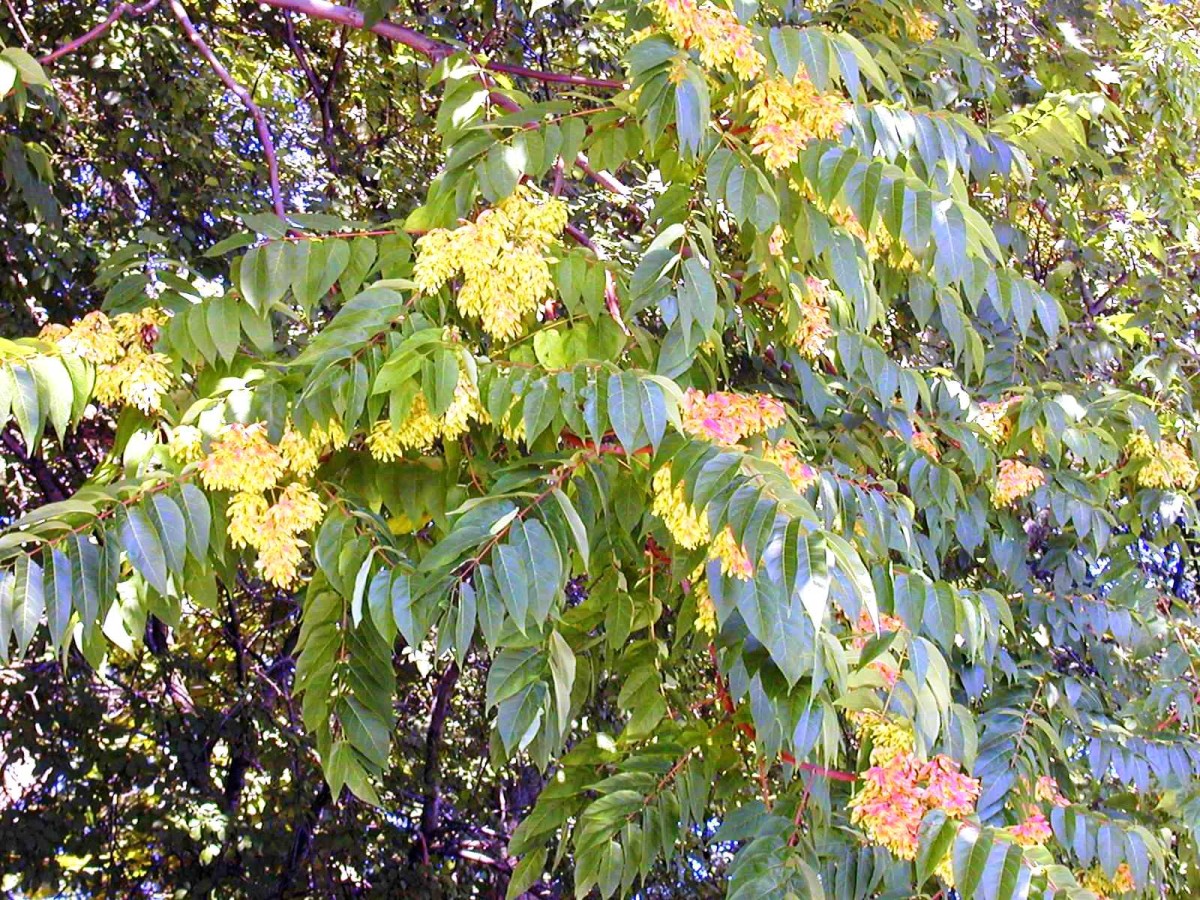In 1996, The New York Times mournfully reported that the Big Apple’s Norway maple trees (Acer platanoides) and ailanthus trees (Ailanthus altissima) were mysteriously dying.
The former is a beloved street tree; the latter is often the only greenery in blighted urban areas. Now, nearly 20 years later, the irony of those articles is sadly apparent: far from disappearing, these trees can be found in nearly every corner of the state and have become a serious threat to natural areas in the Finger Lakes.
Both trees were first brought to this country in the 18th century. The handsome, broad-spreading Norway maple was very widely planted to replace native elms destroyed by Dutch elm disease; there are many attractive cultivars, including some with dark red or variegated leaves. The graceful, tropical-looking ailanthus, a native of eastern Asia, was first a fashionable ornamental (Frederick Law Olmstead used it in his design for Central Park) and, later, a popular choice for a city street shade tree. Both are well-suited in many ways to city living, being fast-growing and very tolerant of poor soils and pollution.
As so often happens, these transplants from the Old World found the new continent welcoming and quickly struck out on their own. It’s hard to get a handle on the current distribution of these trees in the Finger Lakes, as their presence and rate of invasion in any given location depend on current and prior land use as well as climate, soil type, and existing vegetation. In some areas, only one or the other tree is a problem; in other places, neither is known, or both may be present.
Norway maple is probably the more troublesome of the two. It provides scant food for native wildlife, and the dense canopy that makes it such a fine shade tree also makes it a problematic neighbor. Its leaves cast a much deeper shade than that of native maples and its shallow roots siphon off nutrients; it may also chemically suppress the growth of other plants, though this has not been proven. To add insult to injury, the tree leafs out earlier and holds its leaves longer than most native maples; its seeds also sprout earlier. As a result, one of the few things that can grow underneath a Norway maple is another Norway maple.
The Norway maple can be found almost anywhere, but the ailanthus is generally a denizen of disturbed areas: roadsides, railroad embankments, even sidewalk cracks. Its scientific name means “tree of heaven,” but it is also known as the “ghetto palm” because of its habit of growing in empty lots. Like the immigrants whom it symbolizes in Betty Smith’s novel A Tree Grows in Brooklyn, ailanthus is endlessly adaptable and resourceful. It eagerly colonizes new ground with both suckers and seeds; it grows very rapidly, suppressing competition through allelopathic activity (the suppression of growth of one plant species by chemicals produced by another), and quickly resprouts when cut. It seems not to mind compacted soil, drought, or toxins; the only thing it cannot stand is heavy shade. Once it gets a foothold, it can quickly invade natural areas and crowd out native species.
These two trees have become so widely naturalized that most people have no idea that they’re exotics. Although the Norway maple leaf looks very similar to the sugar maple leaf, it is typically larger, and less indented. Its sap is milky, as opposed to the clear sap of native maples. It shows its true colors in the fall: whereas the sugar maple and red maple turn brilliant orange, gold, and red, the Norway maple typically changes to a clear yellow.
The pinnately compound leaves of ailanthus closely resemble those of native plants such as black walnut and, especially, staghorn sumac; in fact, the plant was originally assigned the genus Rhus (sumacs). In the Finger Lakes, ailanthus tends to colonize the same scruffy territory favored by native staghorn sumac. So how do you quickly tell the difference? Sniff the flowers or foliage in order to tell which is which: the ailanthus has a strong odor that has been likened to rotting peanuts or cat urine (whence another of its nicknames, “stink tree”).
There is still time to halt the invasion of these trees into the Finger Lakes, but not much. Dave Steckel, a forester in Pennsylvania, warned, “If you don’t address Norway maple within a decade, the understory’s going to be dominated by it.”
But “It makes excellent firewood,” he added.


